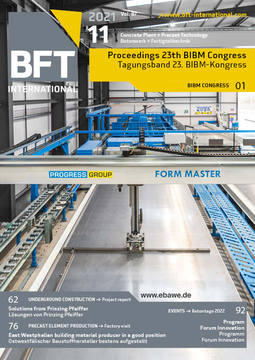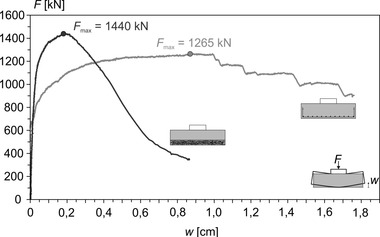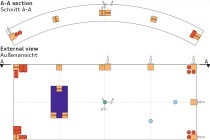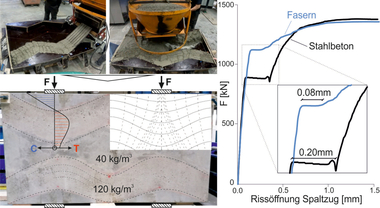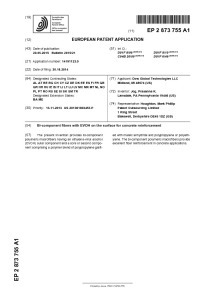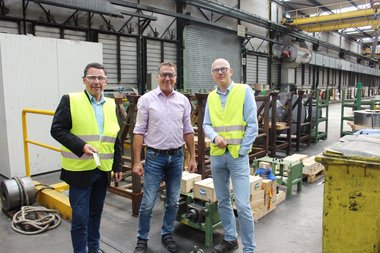MasterFiber: The sustainable and efficient reinforcement for precast concrete
MasterFiber structural polymeric fibers have been established for a long time ago in flooring and pavement applications replacing steel mesh or steel fibers. In recent years they have been used as structural reinforcement in precast elements, as well. In 2019 close to 430,000 m2 of precast panels were produced and some 1,25 Million m2 of concrete pavements were cast with fiber reinforced concrete using MasterFiber portfolio.
A groundwork for a proper design of fiber reinforced concrete structures is to verify structural performance of fiber reinforced concrete. This characterization is carried out in a modified three point bending test EN 14651. A large number of beams are tested to reduce the effect of scattering of test values. The result of these characterization tests is a number of tables indicating residual flexural tensile strength values fR1-4 at different crack mouth openings and with different concrete strength classes and fiber dosages. These tables and their values are unique for each fiber type.
Based on these residual flexural tensile strength values, mainly fR1 and fR3, a constitutive model is being created to evaluate sectional capacity of fiber reinforced concrete. This model can be used in designing of fiber reinforced concrete structures.
BASF has developed together with a professional software company a calculation tool, Civil MB, to be used in design of fiber reinforced concrete structures. It is easy to use and enables the selection of different shapes, concrete classes and fiber dosages. It also enables the use of both conventional steel reinforcement and fiber reinforced concrete together, a hybride solution. This partial substitution of conventional steel reinforcement with fiber reinforced concrete is most common in precast structures. The reports generated by the tool are transparent and easy to understand and help designers and clients to be assured of the performance of fiber reinforced concrete structures.
By using fiber reinforced concrete and thus partially replacing conventional steel reinforcement we can limit the amount of steel to the technical optimum. We can utilize the remaining steel reinforcement contribution and add to that the contribution of fibers on tensile strenght and crack width reduction. Fibers also contribute to improved shear strength.
Substitution of conventional steel reinforcement with structural polymeric fiber reinforced concrete offers several benefits:
Reduction of CO2 emissions by up to 25%,
Enabling production processes to be up to 10% more efficient,
Lowering of energy costs up to 20% due to less steel needed,
Enabling savings in material and labor costs,
Less stacking area is needed for concrete reinforcement,
Improved work safety,
Increased durability of structures due to improved cracking control and reduced crack width,
Increased resistance to impact and spalling of concrete pieces,
Possibility to reduce structure thickness, especially in case of high performance fiber reinforced concrete.
The use of structural polymeric macrofibers in pavement and flooring applications has allowed the savings of some 4,375 tons of CO2 emissions. Also in precast industry sustainability is already and will in the future become an even more important aspect. Precast manufacturers are forced to find ways to reduce their CO2 footprint. Substitution of conventional steel reinforcement with structural polymeric fiber reinforced concrete offers one practical way.


